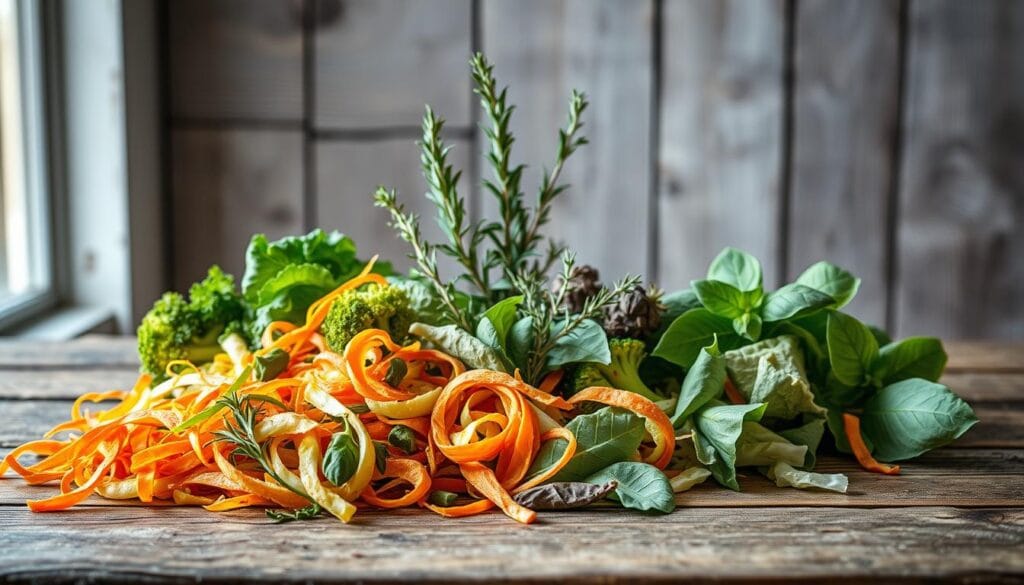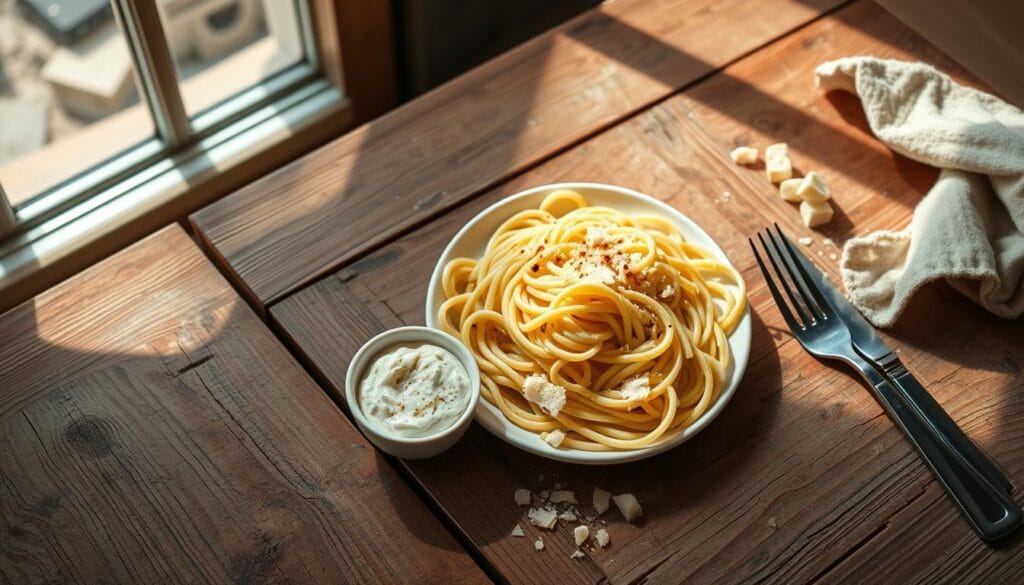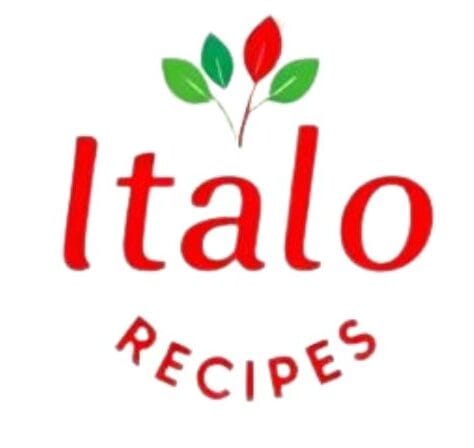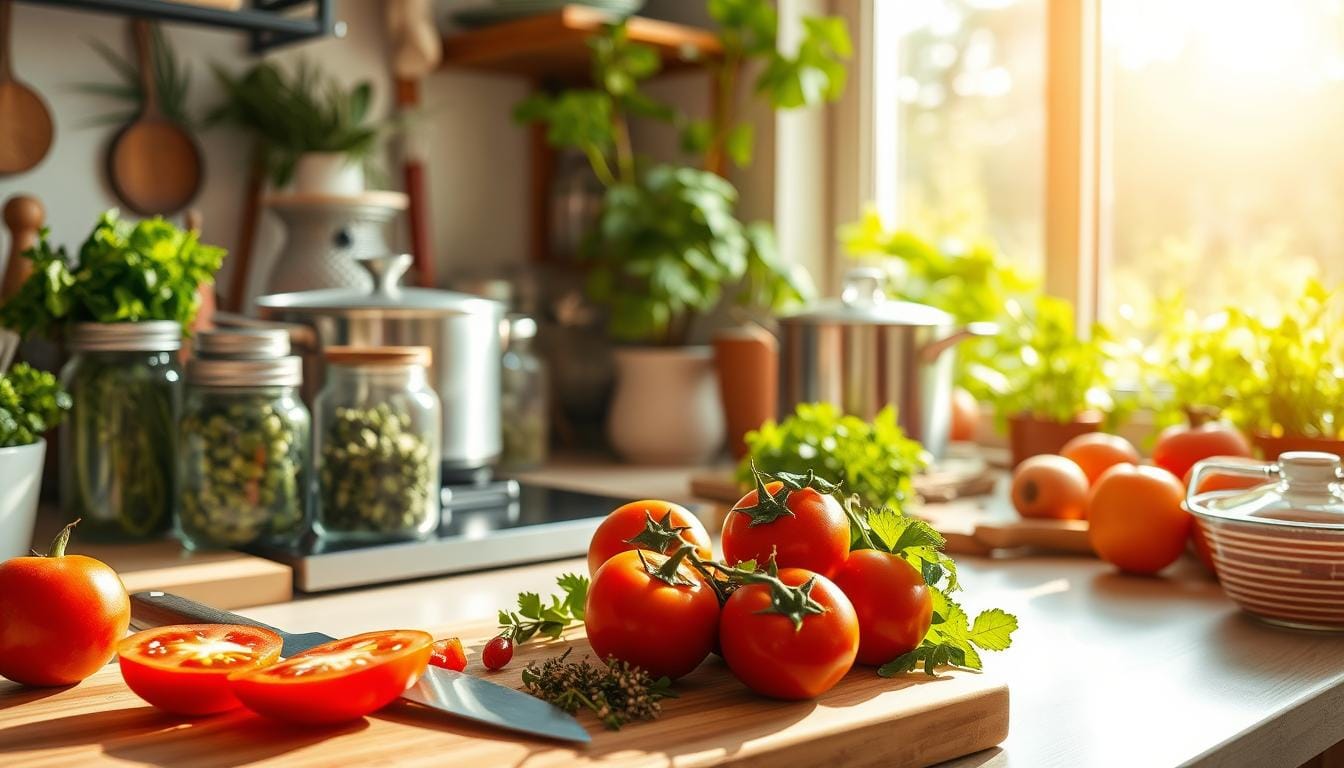Italian anti-waste recipes 25:Tips and simple dishes to make again, everything can be cooked
Did you know that food waste is a big problem? It harms our planet. But, you can make a difference by changing how you cook.
By choosing anti-waste cooking, you help the environment. Plus, you get to be creative in the kitchen. We’ll share 25 tasty Italian dishes to help you waste less and enjoy more.
We’ll show you how to use leftovers and keep food fresh. You’ll learn about Italian cuisine and cooking with care. Get ready to change your kitchen and help the planet.
Table of Contents
Key Takeaways
- Discover 25 simple and delicious Italian anti-waste recipes
- Learn creative ways to reduce food waste in your kitchen
- Explore sustainable cooking practices that benefit the environment
- Make the most of your ingredients with anti-waste cooking techniques
- Get inspired to create flavorful meals with Italian cuisine
The Art of Italian Anti-Waste Cooking
Learning about Italian anti-waste cooking can change how you cook. Italian food is all about using fresh ingredients. This way, you make the most of every piece of food, reducing waste and making tasty meals.
The Italian Philosophy of « Cucina Povera »
« Cucina Povera, » or « poor cooking, » is a key part of Italian cooking. It’s about being simple and smart with food. It means using every bit of an ingredient, making meals that are both healthy and affordable.
This idea is also part of the Mediterranean diet. It’s known for being good for you and focusing on fresh, whole foods. By following « Cucina Povera, » you support a tradition that values being creative and careful with food.
Environmental and Economic Benefits of Anti-Waste Cooking
Anti-waste cooking is great for the planet. It cuts down on food waste, which means less energy used to grow, move, and throw away food. This leads to fewer greenhouse gases and helps fight climate change.
| Benefits | Environmental Impact | Economic Savings |
|---|---|---|
| Reducing Food Waste | Lowers greenhouse gas emissions | Saves money on grocery bills |
| Using Whole Ingredients | Reduces landfill waste | Maximizes the value of your groceries |
| Creative Meal Planning | Decreases the demand for resource-intensive foods | Encourages budget-friendly meal planning |
Essential Kitchen Strategies to Reduce Food Waste
Reducing food waste is easier than you think. Just a few simple kitchen strategies can make a big difference. Being smart about shopping, storing food, and reading labels can help a lot.
Smart Shopping and Meal Planning
Smart shopping starts with planning your meals for the week. This way, you can make a detailed grocery list. It helps you avoid buying things you don’t need, which often ends up in the trash.
When you plan meals, you can use what you already have. Look at what’s in your pantry, fridge, and freezer before you shop. This cuts down on waste.
Proper Food Storage Techniques
Keeping your fridge at the right temperature is key. Use airtight containers to store food. This keeps it fresh longer and prevents spoilage.
Understanding Expiration Dates vs. Quality Dates
Many people get expiration and quality dates mixed up. Expiration dates are about safety, while quality dates are about when food is at its best. Knowing this can help you save food that’s still good to eat.
By understanding these dates and checking food’s freshness, you can cut down on waste. And you’ll save money too.
Transforming Stale Bread: 5 Classic Italian Anti-Waste Recipes
Stale bread gets a new life in Italian kitchens. Italian cooking turns leftover bread into tasty meals. This tradition is a big part of Italy’s food history.
Panzanella: Tuscan Bread Salad
Panzanella is a Tuscan bread salad that started as a peasant dish. It mixes stale bread with tomatoes, onions, and basil. Dress it with olive oil and vinegar.
To make it, tear stale bread into bite-sized pieces and soak it in water. Then, squeeze out the water and mix with tomatoes, onions, and basil. Finish with olive oil, vinegar, and salt.
Ribollita: Hearty Bread Soup
Ribollita is a thick bread soup from Tuscany. It has vegetables, cannellini beans, and stale bread. Blend the bread with the other ingredients for a comforting soup.
Start by sautéing vegetables in olive oil. Add cannellini beans, tomatoes, and vegetable broth. Simmer until flavors blend. Then, add stale bread to thicken.
| Recipe | Main Ingredients | Preparation Time |
|---|---|---|
| Panzanella | Stale bread, tomatoes, onions, basil | 20 minutes |
| Ribollita | Stale bread, vegetables, cannellini beans | 45 minutes |
| Canederli | Stale bread, milk, eggs, ham | 30 minutes |
| Pappa al Pomodoro | Stale bread, tomatoes, garlic, basil | 25 minutes |
| Bruschetta | Stale bread, tomatoes, basil, mozzarella | 15 minutes |
Canederli: Italian Bread Dumplings
Canederli are bread dumplings from the Alto Adige region. Mix stale bread with milk, eggs, and ham. Form into balls and boil until cooked. Serve with melted butter and sage.
Pappa al Pomodoro: Tomato Bread Soup
Pappa al Pomodoro is a simple yet flavorful soup. It uses stale bread, fresh tomatoes, garlic, and basil. Simmer them together for a thick, comforting soup.
Start by sautéing garlic and onions in olive oil. Add diced tomatoes, stale bread, and vegetable broth. Simmer until the bread is fully incorporated. Season with basil and olive oil.
« Bread is the king of the Italian table, and its reuse is a testament to the country’s culinary creativity. » – Italian Proverb
Bruschetta with Repurposed Toppings
Bruschetta is a classic Italian appetizer. It can be made with different toppings. Toast stale bread, then top it with tomatoes, basil, and mozzarella cheese. Drizzle with olive oil and balsamic vinegar for flavor.
These five recipes show how versatile stale bread is in Italian cooking. From soups to salads and dumplings, they can make your meals delicious and reduce waste.
Creative Uses for Vegetable Scraps and Leftovers

Italian cuisine is full of ways to use vegetable scraps. You can turn waste into tasty meals. Just a few simple steps can help reduce kitchen waste.
Homemade Vegetable Stock from Scraps
Making homemade vegetable stock is easy. Just save your scraps in a freezer bag. When you have enough, simmer them in water with herbs and spices. Strain the stock and use it in soups or risottos.
Frittata di Verdure: Vegetable Frittata
A frittata is a great Italian dish for leftovers. Chop your veggies, mix with eggs, and cook in a skillet. Enjoy it at any meal.
Minestrone with Leftover Vegetables
Minestrone is a hearty soup for leftovers. Sauté onions, garlic, and veggies in olive oil. Then add broth and canned tomatoes. Season with herbs and simmer until flavors blend.
Basic Recipe Formula
Begin with sautéed onions and garlic. Add leftover veggies, then pour in vegetable broth and diced tomatoes.
Seasonal Variations
Change your minestrone with the seasons. In summer, add fresh basil. In winter, use root veggies for warmth.
Torta Salata: Savory Vegetable Tart
A savory tart, or torta salata, is perfect for leftovers. Mix veggies with eggs, cheese, and dough. Bake until golden.
Vegetable Pesto Variations
You can also make pesto with leftover veggies. Blend with olive oil, garlic, and nuts. Serve over pasta or as a dip.
Italian Anti-Waste Recipes for Overripe Fruits
Italian cooking has many ways to use up overripe fruits. This reduces waste and makes tasty treats. You can turn these fruits into yummy desserts for any event. It’s a win-win, reducing waste and enjoying seasonal fruits in new ways.
Fruit Preserves and Jams
Making fruit preserves and jams is easy with overripe fruits. These spreads are great on toast, yogurt, or in cakes. You can mix fruits and spices to make unique flavors.
Crostata with Overripe Fruit
Crostata, an Italian tart, is perfect for overripe fruits. Arrange fruits on jam or frangipane, then top with pastry. It’s rustic yet elegant, adaptable to many fruits and flavors.
Fruit Sorbetto
Fruit sorbetto is a light dessert. Blend fruits, sugar, and lemon juice, then freeze. It’s refreshing and healthy. Try different fruits for unique tastes.
Sicilian Fruit Granita
Sicilian fruit granita is a Sicilian treat. Freeze fruit, sugar, and water, then scrape for crystals. It’s tasty and beautiful, great for parties.
Baked Fruit with Amaretti Crumble
Baked fruit with amaretti crumble is warm and cozy. Top fruits with amaretti cookies, sugar, and butter, then bake. It’s satisfying and flavorful.
The Italian saying, « Niente si crea, niente si distrugge, tutto si trasforma » or « Nothing is created, nothing is destroyed, everything is transformed, » guides Italian cooking. By using these recipes, you’re cooking sustainably and enjoying tasty desserts.
Repurposing Pasta and Rice Leftovers

Give leftover pasta and rice a new life with these creative Italian recipes. Italian cooking is all about making the most of leftovers. It’s a way to reduce waste and make tasty meals.
Frittata di Pasta: Pasta Frittata
A pasta frittata is a tasty Italian dish. It’s made by mixing leftover pasta with eggs, cheese, and veggies or meats. Then, it’s fried into a yummy omelette.
Arancini: Sicilian Rice Balls
Arancini are Sicilian rice balls filled with meat, cheese, and tomato sauce. They’re deep-fried until golden and make a great snack or appetizer.
Supplì: Roman Rice Croquettes
Supplì are Roman rice croquettes filled with mozzarella and tomato sauce. When fried, they get a crispy outside and a cheesy inside.
Pasta al Forno: Baked Pasta with Leftovers
Pasta al forno is a baked pasta dish. It uses leftover pasta, sauce, and sometimes meat or veggies. It’s topped with cheese and baked until golden.
Riso al Salto: Crispy Leftover Risotto
Riso al salto is a creative way to use leftover risotto. It’s shaped into patties, coated with breadcrumbs, and fried until crispy.
These Italian recipes are not only good for the planet but also delicious. By adding them to your meal planning, you can enjoy Italy’s rich culinary heritage. Plus, you’ll be reducing kitchen waste.
Meat and Fish Scraps Transformed
You can give leftover meat and fish a new life with Italian recipes. Italian cooking is all about being creative with scraps. It’s a great way to reduce waste and have fun in the kitchen.
Polpette: Italian Meatballs from Leftovers
Polpette are Italian meatballs made from leftover meat. Mix the meat with breadcrumbs, eggs, parmesan, and herbs. Shape into balls and fry until they’re golden. Serve with homemade tomato sauce for a tasty Italian meal.
Fish Croquettes with Herbs
Fish scraps can be turned into tasty fish croquettes. Flake the fish and mix it with potatoes, herbs, and breadcrumbs. Shape into patties, coat with breadcrumbs, and fry until crispy. They’re perfect as an appetizer or snack.
Sugo from Meat Trimmings
Meat trimmings can make a rich sugo or sauce. Simmer the trimmings with onions, carrots, celery, and tomatoes. Strain the sauce and serve with pasta. It’s a way to get all the flavors from the meat and veggies.
Involtini: Stuffed Meat Rolls
Involtini are stuffed meat rolls from leftover meat. Fill thin meat slices with cheese, herbs, and ham. Roll up and secure with toothpicks. Cook in a sauce or on the grill for a tasty main dish.
Brodetto: Fish Soup from Scraps
Brodetto is a fish soup from the Adriatic coast. It’s made by simmering fish scraps with tomatoes, garlic, and herbs. This soup is flavorful and comforting, perfect for leftover fish.
Dairy Products: Use Every Last Drop
Using up dairy products can cut down on waste and add variety to your meals. You can turn leftover dairy into tasty dishes that make your meals better.
Products like sour milk and expiring heavy cream can be used in many creative ways. You can make several useful ingredients from them.
Homemade Ricotta from Sour Milk
You can make homemade ricotta from sour milk. It’s great for pasta fillings, lasagna, or as a dip. Just mix the sour milk with vinegar or lemon juice, heat it gently, and strain it through cheesecloth.
Parmesan Rind Soup
A parmesan rind can make a delicious and savory soup. Simmer the rind in broth with veggies, then blend for a creamy soup.
Mascarpone from Expiring Heavy Cream
Expiring heavy cream can become mascarpone. Whip it with lemon juice or vinegar, then chill it. Use this mascarpone in desserts like tiramisu.
Whey Bread and Pancakes
If you’ve made cheese or yogurt, don’t throw away the whey. Use it to make whey bread or fluffy pancakes. Just replace milk or water with whey in your recipes.
| Dairy Product | Creative Use |
|---|---|
| Sour Milk | Homemade Ricotta |
| Parmesan Rind | Rich Soup Base |
| Expiring Heavy Cream | Mascarpone Cheese |
| Whey | Whey Bread or Pancakes |
Conclusion: Embracing the Italian Anti-Waste Lifestyle
You now have a guide to the Italian anti-waste lifestyle. This philosophy cuts down on food waste and supports green cooking. By using the tips and recipes from this article, you can greatly reduce your kitchen’s environmental impact.
Reducing food waste is a simple yet effective way to live more sustainably. Italian cuisine offers many creative ways to use leftovers and scraps. For example, you can turn stale bread into Panzanella or use vegetable scraps in Minestrone.
By embracing the Italian anti-waste lifestyle, you help create a greener food culture. You’ll also discover new flavors and recipes. Every small change you make can lead to big positive changes.
Start cooking with purpose and make green cooking a daily habit. You have the power to cut down on food waste and cook in a more eco-friendly way.

